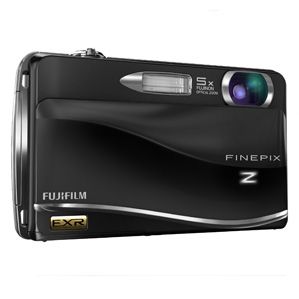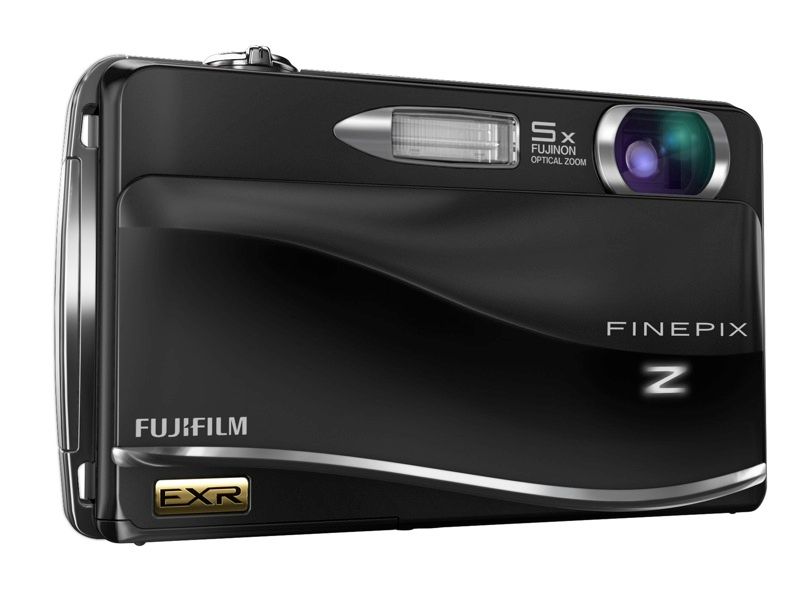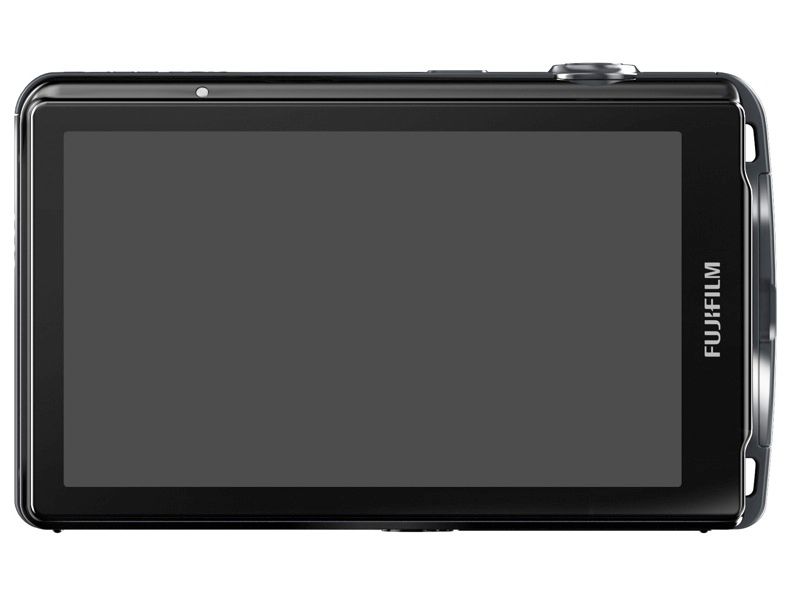Pitched at the Facebook/YouTube generation on the lookout for an attractive pocket snapshot comes the new feature-festooned FinePix Z800EXR from Fujifilm, a 12-megapixel, 5x optical zoom little brother to the co-announced 15x zoom F300EXR. Given its metal build, plus huge 3.5-inch widescreen aspect LCD screen at the rear - doing away with the need for all but three physical controls - the point and shoot pocket camera feels like it should cost more than its modest £199 manufacturer’s suggested UK asking price. Body colours are sensible matt black or hot scarlet.
Our quick take
The Z800EXR comes across as slightly more sophisticated than your regular sub-£200 model then. But at the end of the day it’s still a point and shoot snapper, so image quality isn’t up there on a par with specialist compact models with brighter lenses and bigger sensors, nor for the price would you expect it to be.
So you can perhaps forgive the fact that the performance from the Z800EXR is much the same as that of the F300EXR, with the same pixel count from the same sensor. And that means it shares the same failings: noisy images at ISO 800 and above, a struggle to maintain highlight detail and some very obvious purple pixel fringing. But look beyond the shortcomings and Fuji has come up with a compact that tries a little bit harder than the rest.

Fujifilm FinePix Z800EXR - 4.5 / 5
| FOR | AGAINST |
|---|---|
|
|
It’s a mere 16.9mm in depth at its thinnest point, and dimensions including protrusions are 98.1 x 59 x 20.3mm. It weighs a portable 158g even with battery and SD/SDHC memory card inserted (with 30MB internal capacity to fall back on), so on a practical note you can slip the Z800EXR into a pocket and almost forget about it. A gentle wave-like curve on the front of the camera provides a purchase point for the fingertips: simply slide open the faceplate to activate the camera, and shut it to turn it off.
The image-stabilised 5x zoom, equivalent to 35-175mm in 35mm terms, is internally stacked, so at no point does it protrude from the body. A disappointment though is that the lens stays locked in position when recording video, here at a not quite full HD 1280 x 720 pixels at 24 frames per second, or 640 x 480 pixels at 30fps.
As the model name suggests, this camera once again incorporates Fujifilm’s unique triple use “switchable” Super CCD EXR sensor. It appears to be the exact same 1/2-inch chip utilised in the Z800EXR as in the F300EXR. This means with a flick between the Z800EXR’s virtual shooting mode buttons there’s a choice between shooting at full 12MP resolution in High Resolution (HR) mode, alternatively choosing wide Dynamic Range (DR) mode to achieve optimal balance between shadows and highlights, or Low Noise (SN) mode for shooting without flash in low light conditions. If you can’t decide which is the best fit, then leave the camera on scene-detecting EXR Automatic Mode and let it choose.
It took us a little while to get familiar with the Z800EXR’s touchscreen navigation, as it will anyone more used to having a dedicated button at their fingertips when they want to choose an ISO setting or activate the flash for example. The audible “dink” as you select each subsequent virtual button and feature can quickly become annoying though, so it’s a relief that the sound can be muted if so wished. Very responsive the screen is too.
Feature wise, the Z800EXR comes across as a pared down version of the F300EXR. There’s no HDMI output for example, but there are many of the innovations introduced on that pricier model, including a new 360 degree Motion Panorama Mode that records a spin on the spot as one elongated image, which is fun, plus, in playback mode, there’s a chance to rate your favourites by allocating stars to them, so you’re getting most of the new implementations on the F300EXR for £130 less. And here we additionally get a “touch and shoot” option. Simply prod at an intended subject when and where it appears on screen and the camera’s shutter will fire automatically.
Shared with the F300EXR is a new hybrid auto focus system to measure light and contrast. This chooses between phase detection auto focus, best suited to bright, high contrast situations, or contrast auto focus for darker, lower light scenes. We also get Fujifilm’s film simulation modes, a throwback to its film past and a way for the brand to stand out from the crowd.
The choice, once again, is between warmer, more vivid colours of Velvia mode, the default more naturalistic (read: slightly flat) setting of Provia, black and white or sepia - but no soft and gentle Astia for portraiture this time, not that we missed it. Natural light and natural light with flash option also makes a re-appearance on a Fujifilm camera, giving users who can’t decide for themselves the chance to compare a subject taken with flash against one without to see which actually looks best.
To recap
A feature packed point and shoot camera with the advantage of a huge 3.5-inch widescreen touch panel LCD at the rear. Requires familiarisation though and image quality could be better



